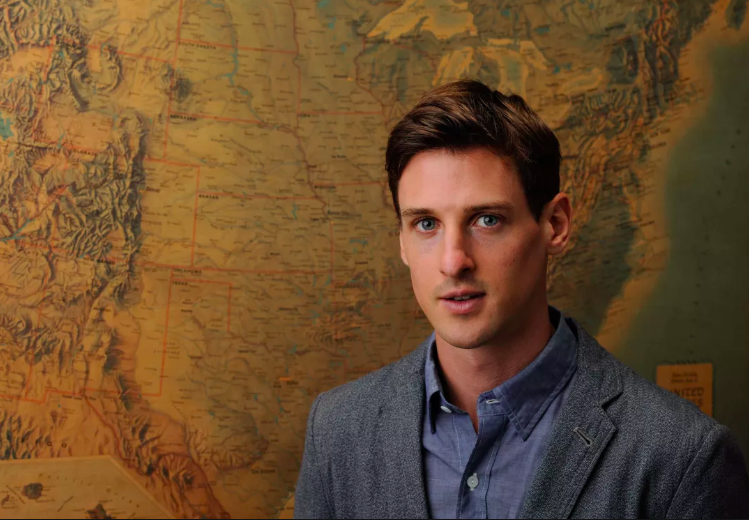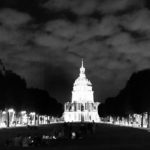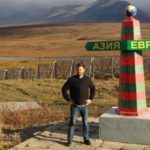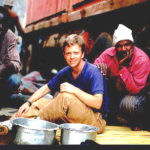1) On the way trails have made us what we are
Trails can be found in virtually every part of this vast, strange, mercurial, partly tamed, but still shockingly wild world of ours. Throughout the history of life on Earth, we have created pathways to guide our journeys, transmit messages, refine chaos, and preserve wisdom. At the same time, trails have shaped our bodies, sculpted our landscapes, and transformed our cultures. In the maze of the modern world, the wisdom of trails is as essential as ever, and with the growth of ever-more labyrinthine technological networks, it will only become more so. To deftly navigate this world, we will need to understand how we make trails, and how trails make us.
2) On the inherent comfort of having a trail to follow
It is impossible to fully appreciate the value of a trail until you have been forced to walk through the wilderness without one. There is a practical reason why, for more than a thousand years, after the fall of Rome and before the rise of Romanticism, little was more abhorrent to the European mind than the prospect of a “pathless” or “tangled” wilderness. Dante famously described the feeling of finding oneself in a “wild, harsh and impenetrable” forest without a path as “scarcely less bitter than death.”
3) On the difference between trails and paths
When we take a step back, we find that the key difference between a trail and a path is directional: paths extend forward, whereas trails extend backward. (The importance of this distinction becomes paramount when you consider the prospect of lying down in the path of a charging elephant versus lying down in its trail.) Paths are perceived as being more civilized in part because of their resemblance to other urban architectural projects: They are lines projected forward in space by the intellect and constructed with those noble appendages, the hands. By contrast, trails tend to form in reverse, messily, from the passage of dirty feet.
4) On how trails are connected to desire
In the 1980s, a professor of urban design at the University of Stuttgart named Klaus Humpert began studying a series of dirt footpaths that had sprung up on the campus’s greens, forming shortcuts between paved walkways. He performed an experiment where he erased the campus’s informal footpaths by resodding them with grass. Just as he suspected, new trails soon appeared exactly where the old ones had been. These impromptu trails, which are surprisingly common, are called “desire lines.” They can be found in the parks of every major city on earth, slicing off the right angles that efficiency deplores. Studying satellite imagery, I have found desire lines even in the capitals of the world’s most repressive countries—in Pyongyang, in Naypyidaw, in Ashgabat. Understandably, dictatorial architects, like actual dictators, despise them. A shortcut is a kind of geographic graffiti, pointing out the authoritarian failure to predict our needs and police our desires. In response, planners sometimes attempt to impede desire lines by force. But this tactic is doomed to failure—hedges will be trampled, signs uprooted, fences felled. Wise designers sculpt with desire, not against it.
5) On the way animal wisdom has fed human wisdom
We may not be able to read other animals’ minds, but we can read their trails. In learning to do so, we have become something more than merely human: hunting animals, we sharpened our intelligence and invented some of our earliest technologies; herding animals, we reaped the reliable luxuries of milk and meat, leather and wool; harnessing animals, we tilled fields, transported goods, and built cities; and studying animals’ wisdom, we have increased our own. That transformation—from animals to humans to humans plus animals—would in turn transform the planet.
6) On the connection between highways and empires
Though the modern interstate is a recent invention, the history of the highway stretches back thousands of years. When the earliest footpaths were widened into roads, the next logical step was to make those roads faster. Often this involved artificially hardening the road’s surface and raising it above the surrounding land so it could shed water (hence the name highway). Unlike trails, highways required a massive expenditure of labor to build, so they were only built when rulers were able to marshal the necessary labor force (usually made up of slaves and soldiers). As a result, the earliest highways served as the tentacles of grand empires. Through them principally flowed three things: royal information, royal armies, and royal personages. In imperial China, wide highways (chi dao) of finely tamped earth, lined with shady evergreens and paved with flat stones, were built with ruts conforming exactly to the axle length of the emperor’s carts and carriages; on each of these three-lane highways, the center lane was reserved for the exclusive use of the imperial family. Along the Roman via publicae were installed milestones, which regularly reminded one of the distance from—and thus, the reach of—imperial Rome. When the Assyrians conquered a new region, they built new roads to more quickly transport military dispatches and allow troops to quash local revolts. The Maya did the same. Incoming Inca emperors would sometimes command their conscripted laborers to build new paved roads even if passable stretches of road already existed, simply to signify their control of that land.
7) On the artificial division between man and nature
In the last twenty years, postmodern environmental scholars like William Cronon have subverted the gospels of Muir and Thoreau by arguing that nature, as a world distinct from the realm of human culture, is an empty and ultimately unhelpful human construct. The concept of nature cleaves the planet in two: presuming that there is a natural world over here and a human world over there. Cronon argues that this division not only alienates us from our own planet, it also obscures our origins as animals, as collections of cells, as collaborative and intertwined living beings. All organisms are involved in a constant process of reshaping our world to better suit their needs, whether they are termites building mounds, elephants felling trees, kudzu vines colonizing an abandoned house, or shepherds and sheep working together to trample out a grassy turf. The thing we call nature is in large part the result of these minute changes and adaptations. There is no single entity or primal state one can point to and call “nature”: it is both everything and nothing.
8) On what is lost as travel becomes more efficient
A trace, when followed, becomes a trail. Likewise a trail, when transformed by technology, becomes a road, a highway, a flight path; a copper cable, a radio wave, a digital network. With each innovation, we’re able to get where we want to go faster and more directly—yet each new gain comes with a feeling of loss. From trains to automobiles to airplanes, each time the speed of connection quickens, travelers have expressed a sense of growing alienation from the land blurring past our windows. In the same vein, many people currently worry that digital technology is making us less connected to the people and things in our immediate environment. It is easy to dismiss these responses as overreactions, the curmudgeonly groans of old men averse to progress. Yet in all these cases, a faster connection palpably diminishes our ability to experience the richness of the physical world: A person texting with her friends or riding on a bullet train is connecting very quickly to her ends, but in doing so, she skips over the immensely complex terrain that lies between those two points.
9) On the way paths are a metaphor to help us navigate our lives
We move through this world on paths laid down long before we are born. From our first breath, there is a vast array of structures already in place—“spiritual paths,” “career paths,” “philosophical paths,” “artistic paths,” “paths to wellness,” “paths to virtue”—which our family, society, and species have provided for us. In all these cases, the word path is not applied haphazardly. Just like physical paths, these abstract paths both guide and constrain our actions—they lead us along a sequence of steps, progressing toward our desired ends. Without these paths, each of us would be forced to thrash our way through the wilderness of life, scrabbling for survival, repeating the same basic mistakes, and reinventing the same solutions.






